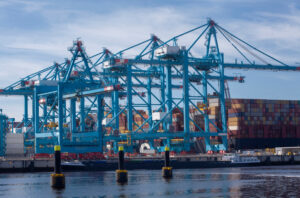In partnership with Aidrivers
Even before the outbreak of COVID-19, there have been indications over the last decade of reaching the peak in globalisation (see graph). As the world sees the urgency in splitting its supply chains and retrenching them back to national level to avoid future pandemic disorder, the focus must undoubtedly turn to the position and importance of automation and robotics on the global stage.
Dr Rafiq Swash, Founder, Aidrivers, explores the trend towards deglobalisation and how automation will play its part in the future of industry in this article.

The pandemic has brought the concept of deglobalisation abruptly to the fore as we have seen endless disruption to manufacturing, shipping, storage and distribution.
These interruptions are all on a global scale due to our historic reliance on cheaper overseas production. The questions are: does COVID-19 mean that we are going to accelerate deglobalisation and if so, at what speed?
Staying at home
Historically, evidence of deglobalisation has already been seen in the stalling of interstate trade and crucially the beginning of the renationalisation of supply chains.
The US-China trade tariff dispute has reinforced this trend. The advancement in automated manufacturing technology means that the location of factories no longer hinges on where the labour is the cheapest.
Put quite simply, factories can stay on home soil, take advantage of efficient automation techniques and increase profitability.
Plus, we now can see that keeping our supplies at home might protect us from future pandemic disturbances. The metric to watch is the speed of uptake of automation which up until COVID-19, was moderate.
Politically and economically COVID-19 could prove to be the catalyst for renationalisation of many areas of manufacturing as countries seek to protect themselves and reduce supply chain vulnerabilities. The countries which do not make these changes could feasibly pay the price again in any future pandemic.
Automation steps in
Automated systems are found all along supply chains. They are used from the creation of products on production lines to the delivery via AI enabled autonomous mobility.
All aspects of robotisation are part of the next step in this new wave of onshoring. These processes deliver tangible methods of reducing costs and increasing efficiency and safety. Significantly, automation stops contagion. A lesson that we have learned the hard way in 2020.
The shift towards deglobalisation has been given a springboard via COVID-19. This is the moment where forward-thinking nations with the R&D, innovation and adaptability will allow the acceleration in the use of automation.
Whether the adoption of robotic assembly lines or autonomous vehicles, automation is central to our next chapter in a post COVID-19 world. The first movers in this sphere will shape much more than their own business. This is just the beginning of an overhaul which will see efficiencies rise and highly sustainable automated practices overtake the current model.
Deglobalisation is an opportunity for automation to move into the limelight and steal the show.









